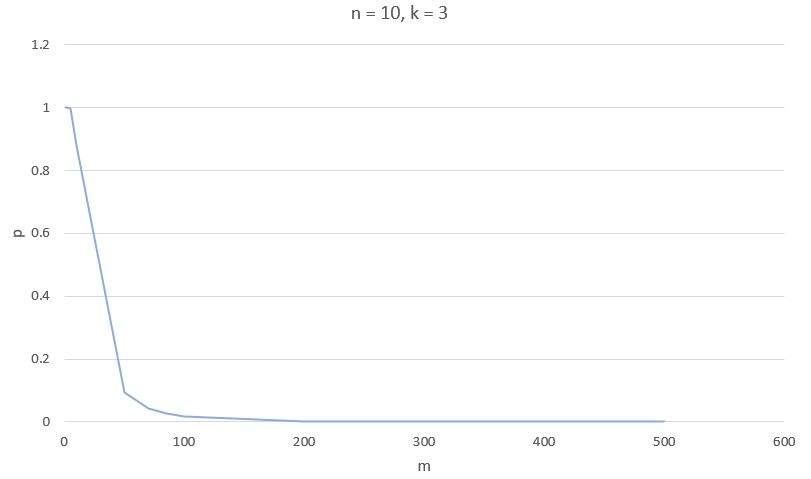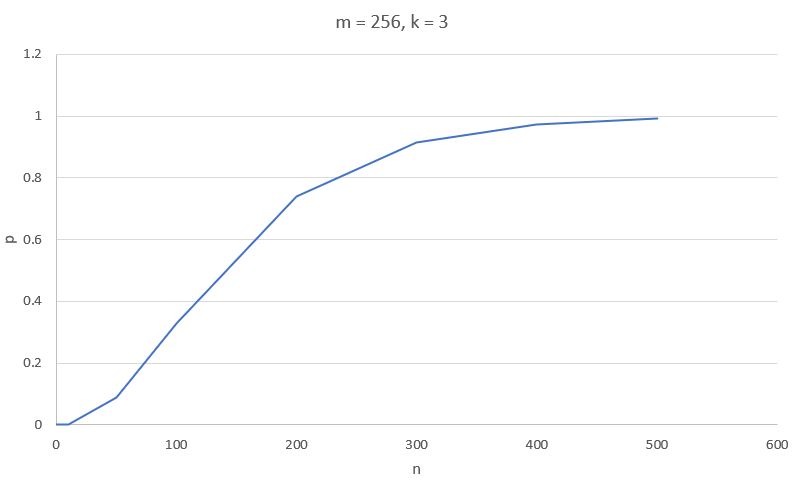False Positive Rate
So far, we learned that bloom filters have a false-positive rate. This rate depends on three parameters:
- size of the filter in bit (e.g. 8 bit, 32 bit, 256 bit, etc).
- number of hash functions
- number of elements included in the bloom filter
We can calculate the probability of a false-positive match with this formula:

Where
- m: size of the filter in bit
- k: number of hash functions
- n: number of elements in the filter
- p: probability of a false positive match
Numerical Example
Calculate the probability p for a false positive match for the following table:
| m | k | n | p |
| 16 | 3 | 2 | |
| 16 | 3 | 5 | |
| 256 | 3 | 5 | |
| 256 | 10 | 5 | |
| 256 | 200 | 5 |
Solution
| m | k | n | p |
| 16 | 3 | 2 | 0,03309652 |
| 16 | 3 | 5 | 0,238544399 |
| 256 | 3 | 5 | 0,000185372 |
| 256 | 10 | 5 | 3,14614E-08 |
| 256 | 200 | 5 | 0,01772303 |
The following charts show the development of false positives depending on m, k, and n if the other parameters are constant.




